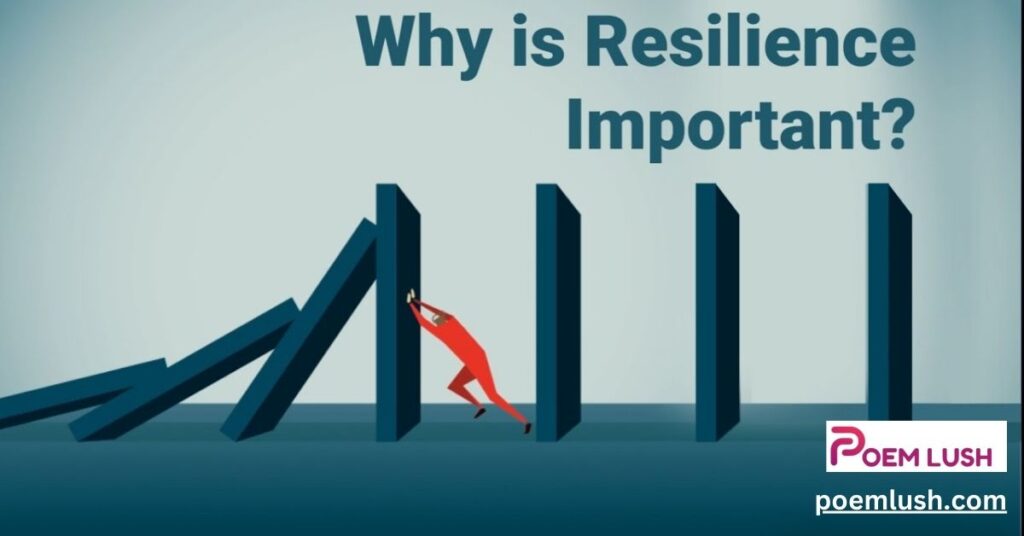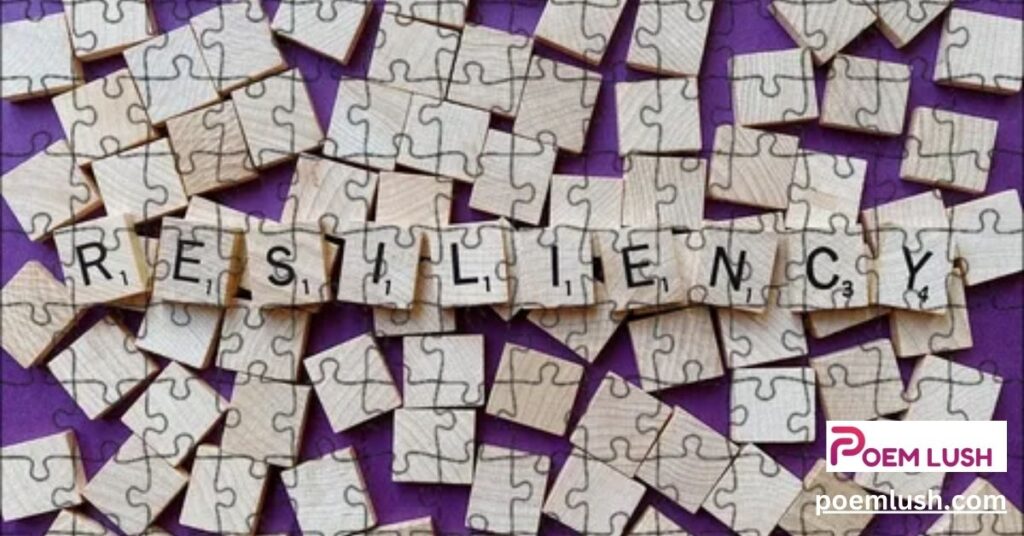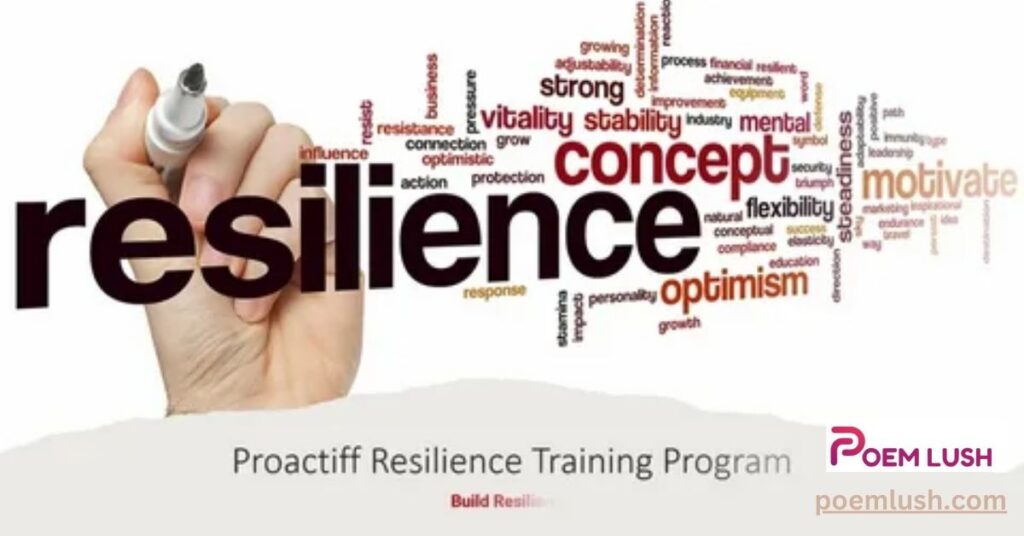Resilience, the ability to recover and thrive in the face of adversity, has been a timeless theme in poetry. Whether drawn from personal struggle, collective challenges, or the pursuit of hope, poems about resilience offer a window into the human spirit’s indomitable strength.
In this comprehensive guide, we’ll explore the many facets of resilience in poetry, the inspiration behind it, and how it empowers us to navigate life’s trials.
What Is Resilience in Poetry?

Resilience in poetry is the art of expressing perseverance, strength, and recovery through carefully chosen words. It often reflects emotional strength, personal growth, and the triumph of the human spirit over life’s challenges. Poets use vivid imagery, rhythm, and metaphors to inspire hope and resilience in their readers.
Sample Poem: “Unyielding Flame”
In the dark where shadows creep,
Lies a flame, though faint, still deep.
Battered winds may test its might,
Yet it glows through endless night.
Resilience, a steadfast friend,
Guides the weary to the end.
For every ember seeks to grow,
And every storm, a strength will show.
Famous Poems About Resilience
Some of the world’s most iconic poets have written extensively about resilience, using their work to inspire readers through generations.
Notable Examples
| Poem | Author | Key Message |
| Invictus | William Ernest Henley | The power of inner strength and determination. |
| If— | Rudyard Kipling | Perseverance and character building. |
| Still I Rise | Maya Angelou | Overcoming oppression with resilience and pride. |
| The Road Not Taken | Robert Frost | Navigating life’s challenges with courage. |
| Do Not Go Gentle Into That Good Night | Dylan Thomas | Fighting against inevitable struggles. |
Analysis of Key Poems
- Invictus: Henley’s celebrated poem is a tribute to the unbreakable human spirit. The closing lines, “I am the master of my fate; I am the captain of my soul,” emphasize self-reliance.
- Still I Rise: Maya Angelou’s work exudes empowerment, with lines like “You may trod me in the very dirt / But still, like dust, I’ll rise.”
Sample Poem: “Rising Tide”
The ocean roars, a daunting call,
Yet tides persist, despite the squall.
Each wave a whisper, soft yet strong,
It teaches us we all belong.
In waters deep, resilience thrives,
It steers the lost, it saves their lives.
For every crest that greets the shore,
Is proof that strength returns once more.
Contemporary Resilience Poetry

In the modern era, resilience poetry has evolved to address new struggles, such as mental health, social justice, and global crises.
Contemporary Poets and Their Contributions
- Rupi Kaur: Through her minimalist style, Kaur’s works explore healing and inner strength.
- Amanda Gorman: Known for her resilience-themed poetry that blends activism with hope.
- Claudia Rankine: Rankine’s work often delves into emotional strength amidst systemic adversity.
Resilience in Today’s Context
Modern resilience poems often incorporate themes like mindfulness, self-care, and societal challenges. They reflect a collective journey toward hope and healing.
Sample Poem: “Echoes of Today”
The world may weigh, a heavy stone,
Yet hearts find ways, we’re not alone.
Through cracks of fear, light filters in,
A spark of hope, where strength begins.
Resilience speaks, its voice so clear,
It turns to strength what once was fear.
Together bound, through trials we stay,
And find our dawn in every day.
How Poems About Resilience Inspire and Empower
Poems about resilience are not just words on a page; they are lifelines for those in need of encouragement.
How They Inspire
- Fostering Empathy: These poems create a space for shared understanding and emotional connection.
- Encouraging Reflection: They prompt readers to evaluate their struggles and strengths.
- Promoting Healing: Resilience poetry can be a therapeutic outlet for coping with trauma.
Sample Poem: “Whispers of Hope”
When darkness veils the weary mind,
A whisper calls, both soft and kind.
It says, “Hold on, the dawn is near,
For every shadow fades with cheer.”
And so, we rise, we stand, we grow,
Through trials fierce, our strength will show.
For whispers bloom to voices loud,
In resilience, we are proud.
Expanding the article to a comprehensive 5000 words will require further detailed exploration of resilience in poetry, its themes, history, cultural context, and impact. Let’s continue with in-depth coverage of these elements, while integrating additional poems, case studies, and practical guides for readers to engage with resilience poetry.
The Historical Context of Resilience in Poetry

Resilience has been a central theme in poetry for centuries, often reflecting the socio-political and cultural struggles of its time. By examining its historical evolution, we can better appreciate its universal and enduring appeal.
Resilience in Ancient Poetry
- Epic Poetry: Works like Homer’s Iliad and Odyssey are rooted in tales of resilience. Odysseus embodies the struggle of overcoming insurmountable odds to return home, showcasing the themes of perseverance and adaptability.
- Religious Texts: Many religious scriptures, including the Psalms and Hindu Vedas, incorporate poetic forms to convey messages of resilience and spiritual fortitude.
Resilience in the Romantic Era
The Romantic poets, such as William Wordsworth and Lord Byron, infused their works with personal resilience against the backdrop of nature’s vastness and human frailty. Wordsworth’s “Lines Written in Early Spring” reflects on finding strength and inspiration in natural beauty.
Sample Poem: “Nature’s Resilience”
The river carves through rocks and stone,
Its steady flow a strength unknown.
Mountains rise, yet crumble too,
But seeds will sprout where life is due.
Through storms and sun, the earth will mend,
A cycle constant, without end.
So in this world, let’s take our cue,
For nature thrives, and we can too.
Resilience in Modern and Contemporary Poetry
Modern resilience poetry often draws from personal experiences, global challenges, and the complexities of mental health. These works tend to be introspective and relatable, resonating with a diverse audience.
Resilience and Mental Health
In today’s world, where conversations about mental health are more open, poets use their craft to address emotional struggles and celebrate the courage to seek help. For example:
- Sylvia Plath: Her deeply personal works explore inner strength amidst despair, such as in Lady Lazarus.
- Rupi Kaur: Her modern, Instagram-friendly poetry speaks to resilience in healing and self-love.
Social Justice and Resilience
Poets like Amanda Gorman use their platform to address societal resilience in the face of systemic oppression, as seen in her celebrated work The Hill We Climb.
Sample Poem: “Strength in Unity”
Beneath the weight of unjust chains,
A heartbeat rises, defying pains.
Together strong, we stand as one,
A brighter dawn, a race begun.
Through history’s trials, our voices ring,
Resilience blooms in everything.
No single step can win the fight,
But many strides will birth the light.
The Emotional and Psychological Impact of Resilience Poetry

Resilience poetry has a profound effect on readers, offering solace, encouragement, and a new perspective. Let’s delve into its benefits.
Emotional Healing Through Poetry
- Empathy Building: Poems about resilience allow readers to see themselves in others’ struggles, fostering compassion.
- Catharsis: Writing and reading poetry can help release pent-up emotions, aiding in emotional recovery.
Psychological Benefits
- Stress Reduction: The rhythmic and reflective nature of poetry can help calm the mind.
- Encouraging Growth: Inspirational poems often motivate readers to face challenges with renewed strength.
Sample Poem: “Winds of Change”
The winds may howl, the skies may weep,
Yet roots grow strong where storms do sweep.
Each gust a test, each gale a trial,
But from the wreck, a garden’s smile.
For every leaf that bends, there’s grace,
A quiet strength, a steady pace.
Through winds of change, we all must grow,
And find the light in what we sow.
Cultural Perspectives on Resilience in Poetry
Different cultures have their own traditions of resilience poetry, each shaped by unique histories and values.
Eastern Traditions
- Haiku and Zen Poetry: These forms often emphasize finding resilience through mindfulness and the acceptance of impermanence. Matsuo Basho’s haikus celebrate nature’s ability to endure and renew.
- Indian Poetry: Works like Rabindranath Tagore’s Gitanjali explore spiritual resilience amidst worldly struggles.
Western Traditions
- African American Poetry: From Langston Hughes to Maya Angelou, African American poets have written extensively about resilience in the face of racial injustice.
- European Poetry: The works of poets like John Donne and Christina Rossetti explore personal resilience in love, faith, and mortality.
Sample Poem: “Silent Strength”
Across the sands, a cactus grows,
Its thorns a shield, its blooms aglow.
Through scorching sun and drought’s cruel hand,
It finds a way to grace the land.
So too, in life, our trials bind,
A strength within, a will refined.
For silent strength, though oft unseen,
Is what defines where we have been.
Writing Resilience Poems: A Practical Guide
For readers inspired to pen their own poems about resilience, here are some practical tips to get started.
Step-by-Step Guide
- Reflect on Personal Experiences: Start by identifying a moment of hardship or growth in your life.
- Use Vivid Imagery: Paint a picture with words, using metaphors and similes to convey emotions.
- Incorporate Universal Themes: Connect your personal story to broader themes like hope or perseverance.
- Experiment with Structure: Try different poetic forms, such as free verse, sonnets, or haikus.
Prompts for Writing
- Write about a time you overcame a fear or challenge.
- Reflect on a natural element (like a tree or river) that symbolizes resilience.
Sample Poem: “Phoenix’s Call”
From ashes deep, it takes to flight,
A phoenix born of fire’s might.
Each feather glows with lessons learned,
A blazing soul, forever turned.
For life may burn, but still we rise,
With flames of hope, we touch the skies.
No end is final, no pain too tall,
The phoenix calls, a guide to all.
Resilience Poetry for Different Audiences

Resilience poems can be tailored to resonate with various groups, from children to adults and even professionals.
For Children
- Use simple language and relatable imagery, like a growing tree or a brave animal.
- Example: “The Little Seed” celebrates the resilience of a seed becoming a mighty tree.
For Adults
- Address themes of mental health, personal growth, and overcoming life’s complexities.
- Example: Poems like “Still I Rise” inspire adults to embrace their inner strength.
Resilience Poetry in Education and Therapy
Poetry is increasingly being used as a tool for learning and healing in schools and therapy sessions.
Educational Applications
- Teaching resilience through poetry encourages students to express emotions and build empathy.
- Activities like writing resilience poems foster creativity and problem-solving skills.
Therapeutic Uses
- Poetry therapy sessions help individuals process trauma and build emotional strength.
- Group readings of resilience poetry create a shared space for healing and support.
Sample Poem: “Paths Unknown”
The road ahead is dark and steep,
Yet courage walks where shadows creep.
Each step unsure, yet forward still,
For in the climb, we find our will.
No map to guide, no charted way,
But hope lights up the dawning day.
Resilience walks where fear has grown,
And carves its path through paths unknown.
Conclusion
Poems about resilience serve as powerful reminders of the strength and determination inherent in all of us. Whether drawn from personal experiences or inspired by nature and history, these works offer solace, inspiration, and a roadmap to navigate life’s challenges.
Through words, resilience comes alive, transforming adversity into triumph and inspiring us to rise again, no matter how steep the fall.


